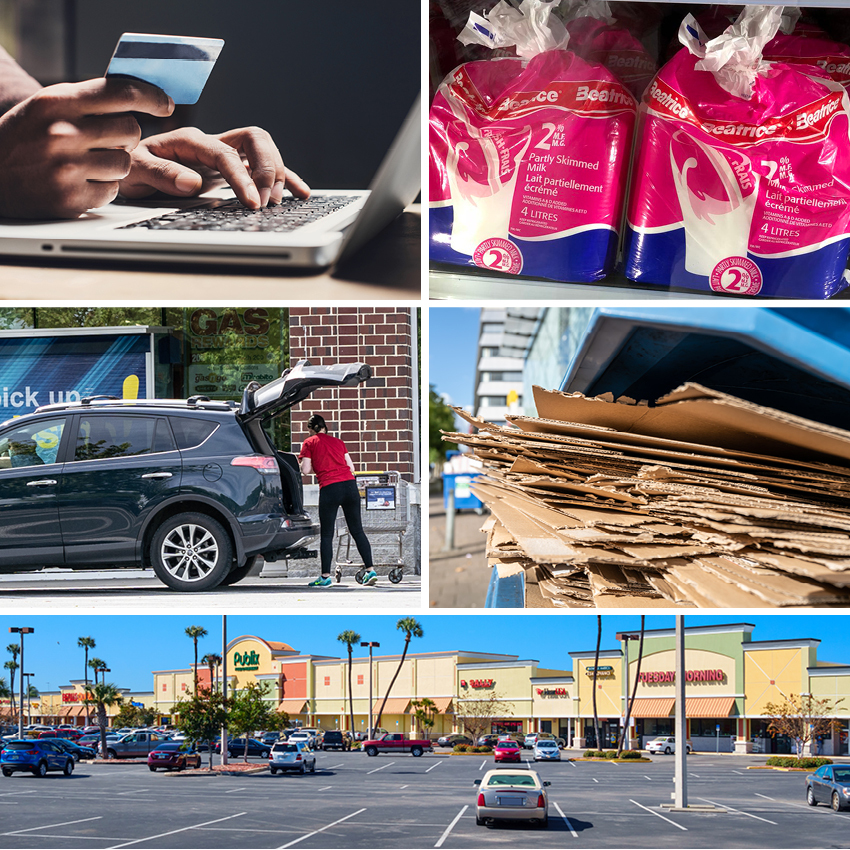PrePan…Pan…Not-Yet-PostPan. What does the world of retail look like now? What did we learn? What did we let go of …and what changed us? Here\’s a retrospective look forward.
1. Shopping Safely
You\’d have to living in a cave not to know that digital sales have exploded in our Pan world. Just between March and April of this year, the first month of our shared Pandemic, the number of customers buying online increased in the U.S. by more than 30 percent. The dollar volume was even higher as everyday shopping was reinvented. On Black Friday, the traffic at local malls was light. Encouraged by government, fueled by new habits, and still in shock over the aftermath of the election, Americans spent most of their money online. Call it a cyber- weekend event. Yes, some major retail sectors are dying, but the good news is that the beast of consumption is alive and well. – Home Depot, the home furnishings industry, grocery, and small contractors focused on home improvements are having banner years. We are spending our money; the question is where and how. Conclusion? We are in for some focused physical changes, particularly in how the analog and our digital worlds need to work together.
[callout]In Europe there are strict laws governing recycling. In some countries the responsibility is not with the consumer, but with the merchant selling you stuff. American trails much of the rest of the first world in legal restriction and conditions on how we recycle.[/callout]
2. Packaging
Once we reach age 35-40, roughly 80 percent of our weekly purchases are the same things. And it isn\’t just food, those ongoing purchases could be soap, cosmetics or bird seed. Yet, for many commodity purchases, the form in which we buy them hasn\’t changed in 50 years. So, why can\’t those replacement products come to us in a greener form? Why is innovation stuck in the U.S.? Buy milk in an Israeli supermarket and it comes in a compostable bag. The bag fits into a plastic container with a handle that slips nicely into the fridge. How many more products could we get the same way? Sign up for a subscription or the loyalty card that gives you a 15 percent discount on that product and you also get the washable branded container for your kitchen shelf. We are due for a basic packaging reduction act.
3. New Pick-Up Models
Order online and pick up at the store is booming. The shift is about saving time and staying out the store in a CV shopping environment. But other strong responses from BOPIS customers are \”I stick to the list…we no longer buy on impulse … It\’s a relief not to have whining kids with me as I shop.\” We also know that some 20 percent of customers (varying greatly by region) cannot accept online purchases at their place of employment. Teachers, policeman, construction workers, nurses – the list is long. As researchers we also know that employers are not happy when the working day is constantly interrupted with deliveries. Even though many of us have been stuck working from home, can you interrupt that Zoom call to answer the door? And in some places, how safe is it to leave stuff on your doorstep? The protocols for how we deliver need to match the realities of mainstream America. And what happens when winter hits Chicago and Boston, much less Bangor, Maine? What are the protocols for at the store or at the mall pick-ups in bad weather? For the store/mall much less the people doing the loading, the issues are real. My vision is a variation on a car wash, just lose the brushes: We drive through a weather-protected tube, open our trunks and motor on.
4. Recycling
A huge challenge to Jeff Bezos – with Amazon\’s explosion – is single-use cardboard, bubble wrap and paper that go from his warehouse directly to our garbage. How much of it is actually recycled? Painfully less than you\’d imagine. UPS, FedEx, much less the Post Office, are anticipating this holiday season with horror they as they struggle with today\’s volume. We need a structural solution. What if everything came, unwrapped, in a recyclable plastic bin that you paid a deposit on? Return the bin – get credit for the next shipment. Look at Europe and you have strict laws governing recycling. In some countries the responsibility is not with the consumer, but with the merchant selling you stuff. American trails much of the rest of the first world in legal restriction and conditions on how we recycle. The good news is that technology for tracking and cleaning recyclable shipping materials has gotten immeasurably better. As we move into 2021, green adjustments have distinct economic rewards.
5. Landlord Services
Shopping mall and strip mall operators are very unhappy. Historically American retail landlords have been passive. They build, sometimes clean, provide minimal security, do some maintenance and collect rent. That needs to change. Both shopping and strip malls need to facilitate BOPIS for the non-big box tenants. One logical way of doing it is put collection points into the parking lots — I\’m thinking recycled shipping containers. The mall has a service (a golf cart) picks up BOPIS at the tenant stores and moves them to the pods in the parking lot. The customer is texted about which pod to visit and the whole process keeps malls relevant and safe.
Gratitude
Our PostPan world is an opportunity for positive change. Smarter stores, smarter web, greener packaging and supply chain are just the start. Most of us have had to recalibrate our social lives and make better friends with our families and mates, over the past nine months. There are many out there struggling, so remember this holidaze season to do good deeds. Particularly ones that no one can thank you for directly.




